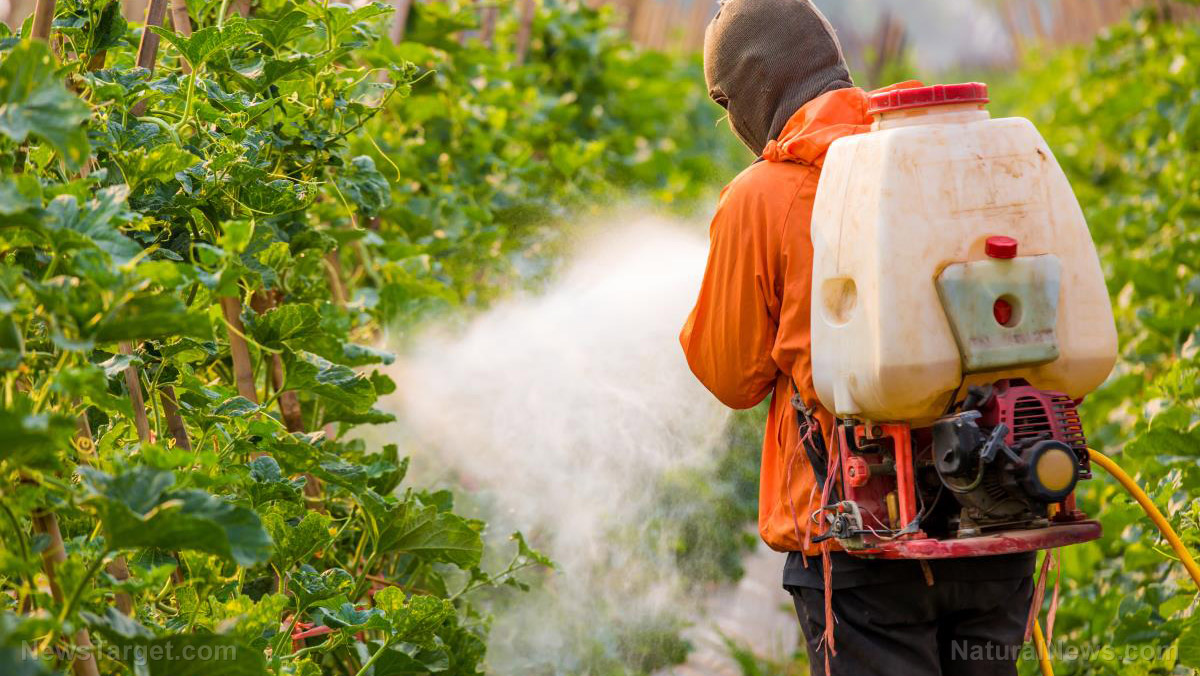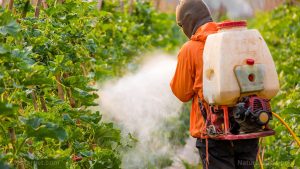Cyromazine – toxicity, side effects, diseases and environmental impacts
12/07/2017 / By Zoey Sky

Cyromazine is an ectoparasiticide, or an insect growth regulator. It is mainly used to control Diptera larvae. Cyromazine belongs to the family of Aminotriazines, which are organic compounds containing an amino group attached to a triazine ring. It appears as a white crystalline solid.
The Food and Drug Administration (FDA) approved the use of cyromazine in livestock. The insecticide is also approved for use in the European Union (EU) and other countries. It is highly soluble in water and considered relatively volatile. Its persistence in soil and water systems is highly dependent on local conditions. While cyromazine has a low mammalian toxicity, it may cause adverse effects on reproduction and development if ingested. Cyromazine is also a skin irritant. It is moderately toxic to birds, fish, aquatic invertebrates, and earthworms, but less so to honeybees.
Cyromazine’s trade names and identifiers include:
- 66215-27-8
- Larvadex
- Vetrazin
- Trigard
- Cyclopropylmelamine
- Cyromazin
- Vetrazine
- Neporex
- Citation
- Cypromazine
- Azimethiphos
- 2-Cyclopropylamino-4,6-diamino-s-triazine
- Armor
- N-cyclopropylmelamine
- N-Cyclopropyl-1,3,5-triazine-2,4,6-triamine
- Vetrazin (pesticide)
- Cga 72662
- Cyromazinum
- Ciromazina

List of known side effects
Cyromazine causes skin irritation and serious eye irritation. It may also cause respiratory irritation. Cyromazine is toxic to aquatic life, with long-lasting effects.
In toxicity studies in mammals (rats, mice, dogs and rabbits) the following symptoms were observed after heavy overdose: ataxia (uncoordinated movements), salivation (drooling), sedation, dyspnea (difficult breathing), curved position and exophthalmos (eye bulging out of the orbit). Affected animals recovered nine to 12 days after treatment.
Cyromazine is moderately toxic to birds and among arthropods (insects, mites, ticks, etc.) cyromazine is quite specific for dipterans. It is only slightly harmful to many beneficial organisms. Cyromazine is toxic to certain aquatic invertebrates (e.g. mosquitoes and other Diptera larvae).
It is readily soluble in water and breaks down only very slowly, both in soil and water. Cyromazine can contaminate groundwater. The correct use of cyromazine on poultry and sheep and for manure and waste treatment is unlikely to be harmful to the environment and coprophagous insects.
Body systems affected by cyromazine
Exposure to cyromazine can irritate the skin, eyes, and the respiratory tract.
Items that can contain cyromazine
Cyromazine is an insect larvicide used mainly to control Diptera larvae and flies on livestock and other insect pests in fields and greenhouses. It is used to control pests such as leafminers, Colorado beetles, fungus gnats, Sciarid flies and shore flies. Cyromazine is applied on vegetables such as celery, cabbage, onions, beans, lentils, peppers and turnips. It is also used on lupins, cucurbits, tomatoes and potatoes.
Examples of recorded resistance to cyromazine include:
- Drosophila melanogaster
- Liriomyza trifolii
- Lucilia cuprina
- Musca domestica
Some manufacturers and suppliers of products using this active (now or historically)
- Syngenta
- Novartis Animal Health
How to avoid cyromazine
Always wear proper protective gear when handling cyromazine. Do not enter or allow worker entry into treated areas during the restricted-entry interval (REI) of 12 hours. Personal protective equipment (PPE) required for early entry to treated areas that is permitted under the Worker Protection Standard and that involves contact with anything that has been treated, such as plants, soil, or water is: Coveralls, chemical-resistant gloves made of any waterproof material – Category A (e.g. barrier laminate, butyl rubber, nitrile rubber, neoprene rubber, polyethylene, polyvinylchloride [PVC] or Viton), and chemical-resistant footwear and socks.
Where to learn more
Summary
Cyromazine is an ectoparasiticide, or an insect growth regulator.
Cyromazine causes skin irritation and serious eye irritation. It may also cause respiratory irritation. Cyromazine is toxic to aquatic life, with long-lasting effects.
Cyromazine is an insect larvicide used mainly to control Diptera larvae and flies on livestock and other insect pests in fields and greenhouses.
Sources include:
SOURCE 2
Tagged Under:



















